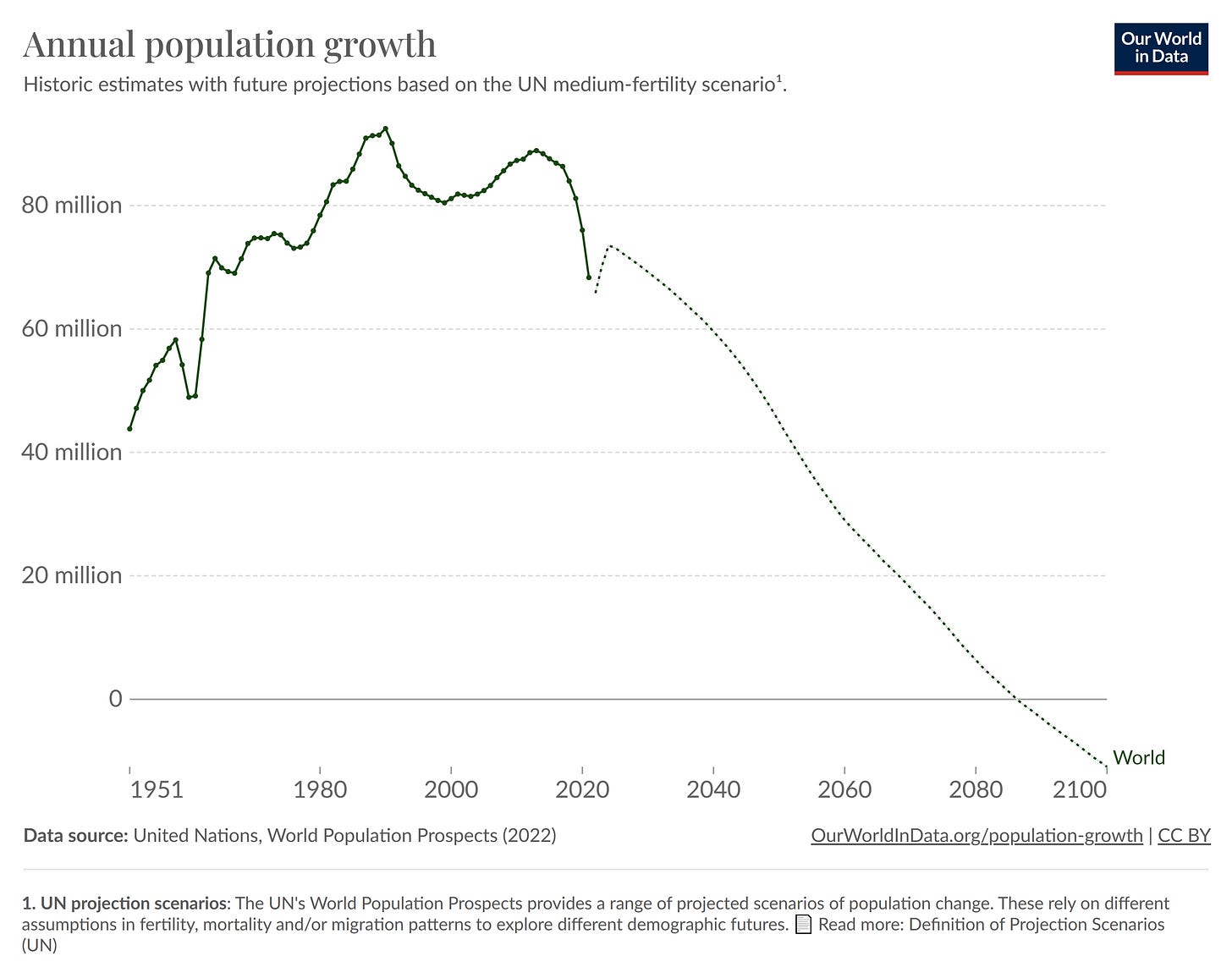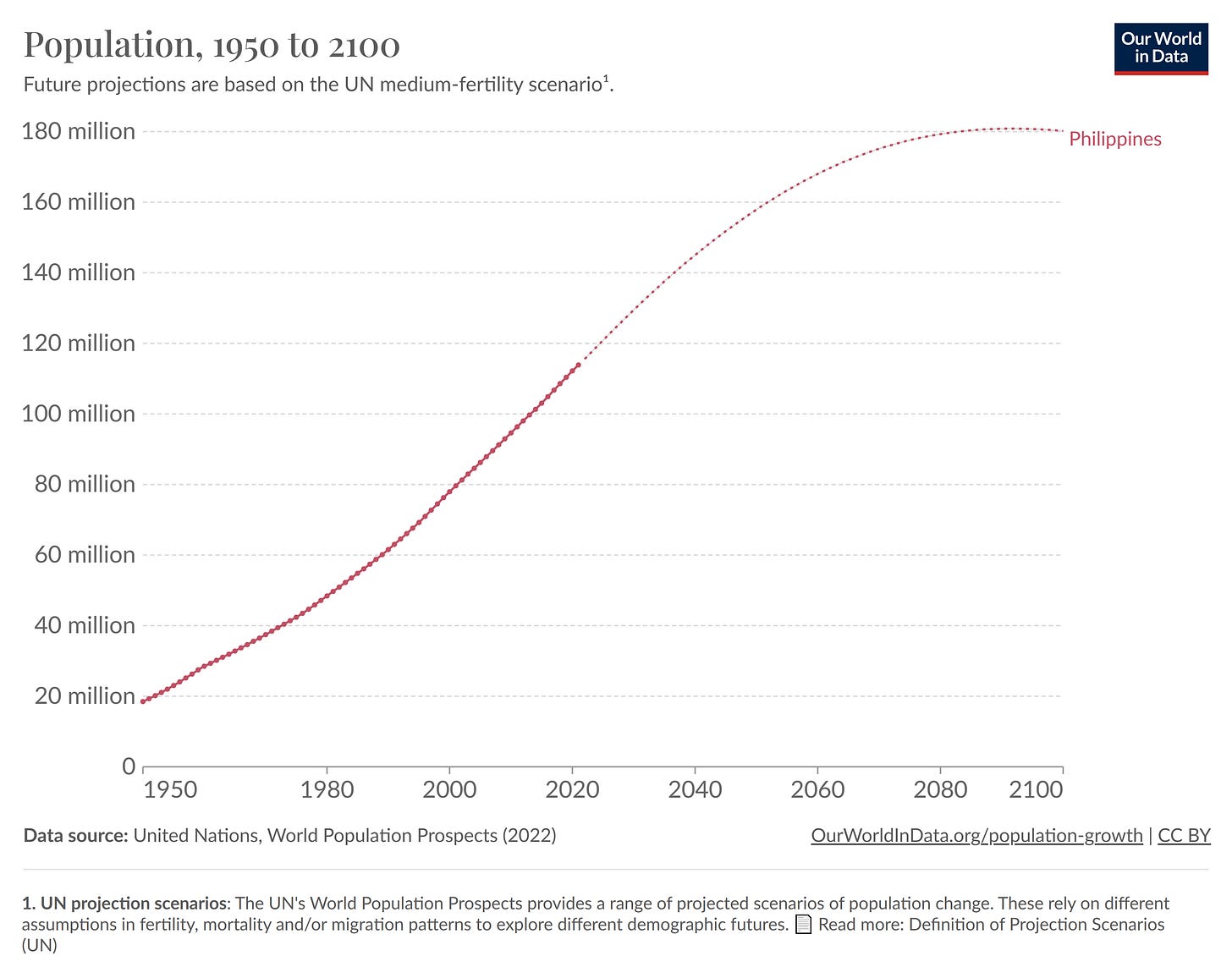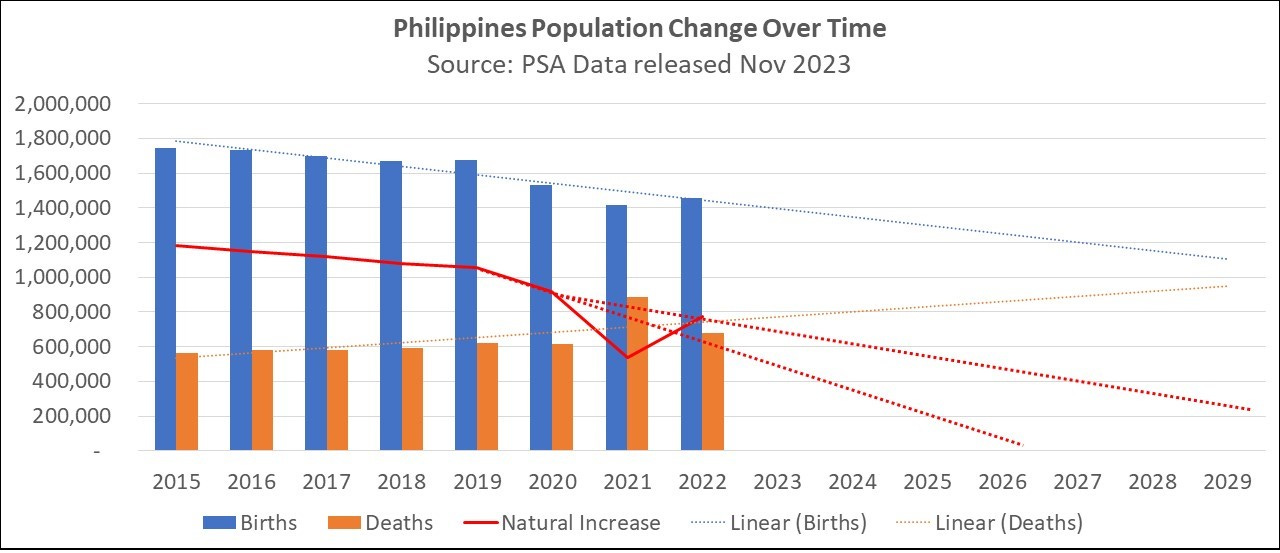POPULATION STATISTICS - ARE THEY ACCURATE? HOW WOULD WE KNOW? International Agencies May Be Grossly Overestimating Populations. They are also not reflecting ongoing depopulation.
Philippines Population Growth is well below both international and local projections based on vital statistics data. PSA has just revised their population estimates downward from 115 to 112 million.
Worldometer puts the current world population at 8.1 billion.
OWID has lower estimates, claiming that the World’s Population currently stands at 7.91 billion persons.
Then, this is this interesting chart from OWID. It shows a rapid decline in population growth in 2021, and there is still no data for 2022, though it seems to assume that there will be some recovery in world population growth in 2024. Between 2020 and 2021 there was a drop in population growth of nearly 8 million, from 76 million to 68.3 million. If that drop in annual growth were even duplicated in 2022 and 2023, population growth would be down to around only 50 million a year by the end of this year, a level not seen since the 1950s.
Philippines Population Growth International Sources vs. PSA
For the Philippines, specifically, both OWID and Worldometer put the current population at 117.3 million.
Note that OWID puts the Philippines 2022 Fertility rate at 2.73.
This is a gross overestimate, as PSA has already determined that the 2022 fertility rate had dropped to 1.9, and projects that this will continue to decline. The Philippines should NOT be having the declining birthrates that it has because even with declining fertility, much of the population are only just entering their childbearing years.
While the Philippines Statistics Authority (PSA) / Popcom claimed that the Philippines population would reach 115 million by the end of 2023 earlier this week (this had been based on an annual growth rate of 1.6% since the 2020 census), it has just now revised its estimate down to 112 million.
The PSA central officer registers and collates all registered births and deaths into a central and public data base. There is likely little under capture of this data, as birth certificates are a pre-requisite for issue of Identification documents and participation in life, and death certificates are required in order to bury a deceased person and to claim their estate, if any.
I have done two estimates. One based on the 2015 Census and adding all births and subtracting all deaths, and assuming 2023 will be similar to 2022 (likely too conservative), and then the same using the 2015 Census.
2015 Census Declared Population as of 1st August 2015 = 100,981,437
Calculated Population by 2020 Census as of 1st May 2020 = 106,601,850
2020 Census Declared Population as of 1st May 2020 = 109,035,343 (+2.3% vs. calc.)
2023 PSA Revised Population Estimate, = 112 million (assumed 1.6% growth in 2023).
Calculated probable end of 2023 Population based on 2015 Census = 108,264, 534
Calculated probable end of 2023 Population based on 2020 Census = 111,753,283
The revised PSA estimate for 2023, based on the 2020 census is pretty close to my calculation! Thank you, PSA! I assume you are reading my substack, and I am glad that you are professional in revising your data with good basis!!
What about the estimate based on the 2015 census? That could mean there are 3.5 million fewer people than the current estimates. The 2025 Census should provide more answers.
Accuracy of Population Statistics?
What does all this demonstrate? That population counting is not very accurate. AND that it is even less accurate if you don't look at your actual data. Population is a critical national parameter for planning. Accuracy and precision must be maximized.
I disagree with international agencies which claim Philippines population will plateau and decline by around 2050. The drop in births and the rise in deaths are both accelerating. I believe depopulation will be reached within this decade if current trends do not reverse! I am trying to raise an alarm!
Globally, it would appear that world authorities seem to be grossly overestimating birth rates and underestimating death rates, and have not adequately considered the ongoing depopulation impacts of the Declared Covid-19 Pandemic Measures.
What is the real-world population? Hazarding a guess, I would expect it is closer to 7 than 8 billion for sure, and potentially dropping rapidly, very rapidly!
Where are the population scientists? Will you speak up, or will you be silent until citizen researchers can create enough momentum to force your emergence from the comfort of misleading models that are not based on real data!










Thank you again, Super Sally. An intriguing article. You are surely onto something.
Gary S